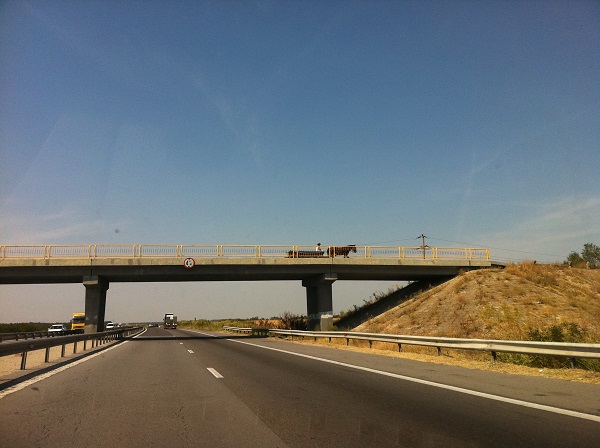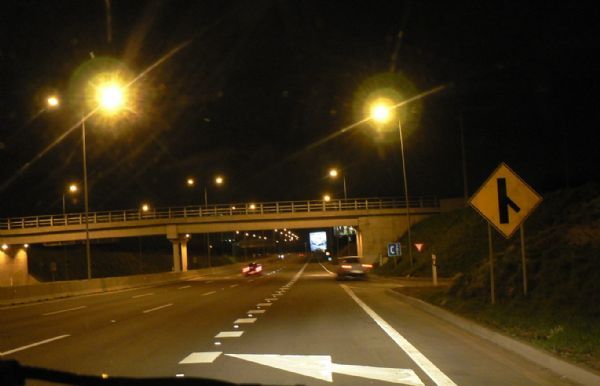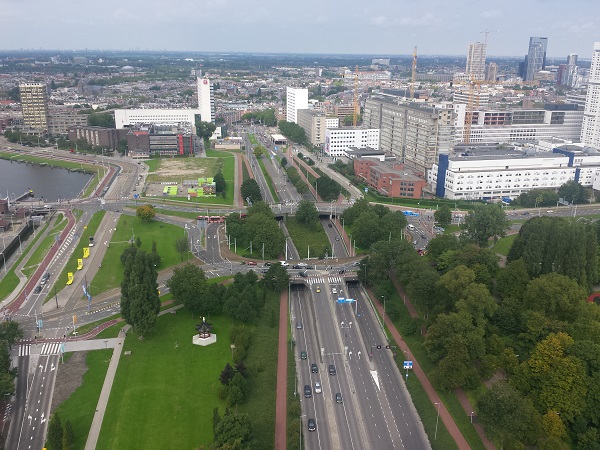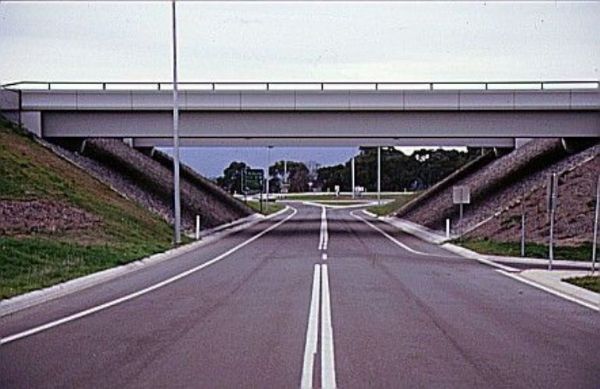





Intersection - Grade Separation
Most crashes happen at intersections. The best way of stopping conflicting intersection movements is placing the intersecting roads at different levels, or grade separating them. This can be done with overpasses or interchanges.
An overpass is a simple grade separation of two roads whereby there is no actual link between them and hence no exchange of traffic is possible. Overpasses are typically used when a minor road crosses a major road, and where a rail line crosses a road.
An interchange allows traffic to move between two or more roads which are grade separated. Interchanges vary from simple arrangements with ramps and intersections at the minor road to complex layouts where two or more freeways (major highways or motorways) connect.
Compact interchanges have a tighter layout and are economic solutions for divided roads of lower design speeds. These interchanges require a single overpassing bridge and may be integrated with the road network of neighbouring urban developments.
Grade-separated intersections generally perform well in road safety since conflicting movements are removed. However, safety problems could arise at merging and diverging areas, and along any sharp curves on connecting roads.
Grade-separated intersections should be simple in layout and changes in design speeds should be obvious to drivers and riders. Successive merging or diverging points should be introduced in steps with ample separation to simplify the driving task. Safety barriers and parapets also require elaborated design since grade-separation is associated with diverge gores and frequent embankments, drops, underpasses or bridges.
Overpasses and interchanges are very costly and are usually built as part of a motorway system where large traffic flows justify the cost. Occasionally, interchanges and rail overpasses are built on busy urban highways when justified by road safety and traffic flow improvements.
- Reduction in intersection crash types.
- Improved traffic flow.
- Simplifies potentially complex movements typical at ‘T’ and ‘X’ intersections.
- Removes the cost of running at-grade traffic control hardware
- A range of design options should be considered before an interchange layout is chosen.
- The design of interchange should take advantage of local topography to minimize earthworks and to facilitate traffic joining or leaving the mainline.
- Interchanges should be relatively simple with limited decision points which are spaced apart. They should enable all drivers to readily identify the direction with minimal need for lane changing.
- Unusual merging or diverging areas should be avoided.
- Directional signing should be correct, clear, visible and commences well in advance of diverging areas.
- Merging and diverging areas should be extended if traffic is heavy or located on unfavourable alignment,
- Merging and diverging areas should be designed with adequate visibility and length for acceleration or deceleration.
- The need to reduce speed on connecting roads within an interchange should be obvious to drivers leaving the mainline.
- At complex interchanges and interchanges with heavy merging or diverging flows, successive merging and diverging areas should be spaced apart.
- An interchange should allow bicycle and pedestrian traffic to pass through the area.
- Adding on-ramps and off-ramps to a freeway can increase high speed weaving and merging crashes.
- Interchanges can negatively impact the appearance of an area.
- Interchanges may separate communities due to their size.
- Grade separating rail crossings can involve vertical realignment of a long length of rail track (because trains cannot travel on steep grades), which is very costly.
- Certain interchange layouts are susceptible to wrong-way driving which require appropriate mitigatory measures.
The Star Rating Demonstrator is a freely available tool with the iRAP online software, ViDA. With the Star Rating Demonstrator, it is possible to explore the impact that this Safer Roads Treatment has on risk.
Treatment Summary
Costs | High |
Treatment life | 20 years + |
Potential casualty reduction | 25-40% |
Case Studies
Related Images
 Grade separation in Romania. Image credit: Alina Burlacu
Grade separation in Romania. Image credit: Alina Burlacu A grade separated intersection and merge lane with effective street lighting. Image credit: Greg Speier
A grade separated intersection and merge lane with effective street lighting. Image credit: Greg Speier Grade separated intersection in the Netherlands. Image credit: Alina Burlacu
Grade separated intersection in the Netherlands. Image credit: Alina Burlacu Grade separated intersection. Image credit: ARRB
Grade separated intersection. Image credit: ARRB










